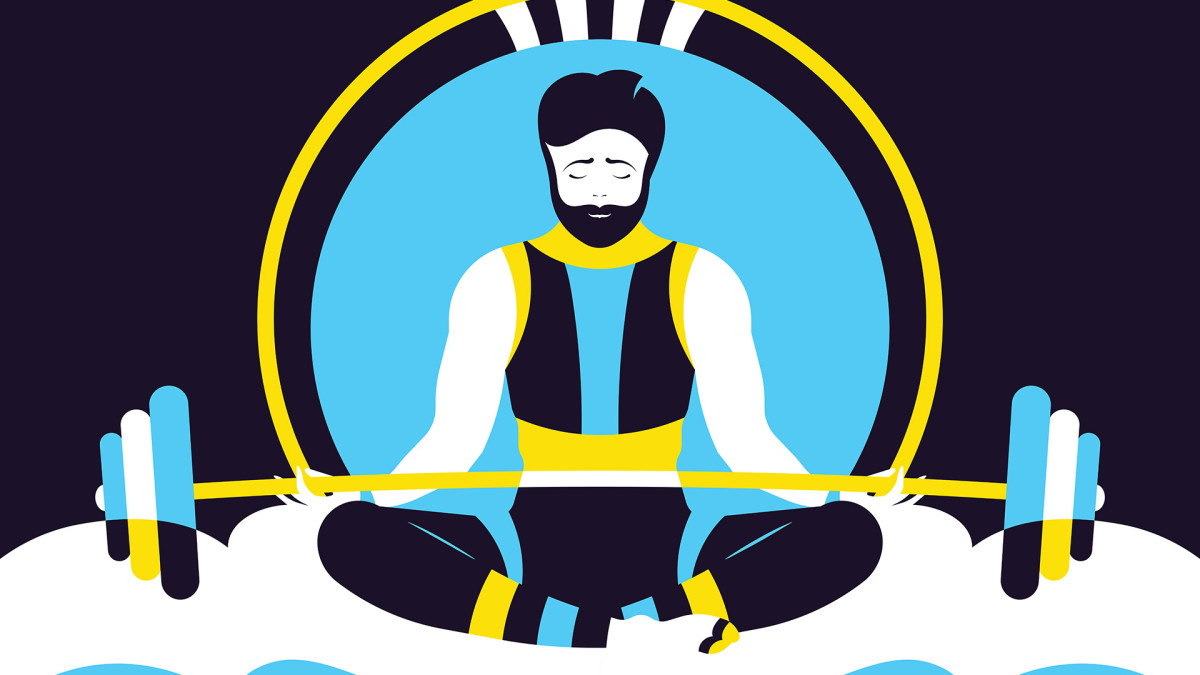from Reuters: Health News https://ift.tt/2ZEP9zY
via IFTTT
Whew, we made it through 2019. Well done, all. Thanks for reading—the good, the sad, the funny—we appreciate you. These were the most-read stories of the year. Go ahead and revisit them with us, and then let’s go skiing. Happy New Year and we’ll see you in 2020 (especially if you subscribe to a year of The Skier’s Magazine right here).
This article originally appeared on Powder.com and was republished with permission.

The 79-year-old said he was diagnosed during a "routine medical visit and subsequent tests."

Parents of small children should be concerned because the B strain is proving more dangerous for kids.
Whether you’re already in the trenches of dropping those unwanted pounds or just getting around to your New Year’s weight-loss resolution, you’ve probably already hit a few roadblocks. Sugar cravings, hunger pangs, and the constant temptation—whether it’s during the holidays or at a tailgate—to eat fattening foods can all get in the way of building a beach-ready body. But they don’t have to. Meeting your weight-loss goals doesn’t have to be so hard.
Studies have showed that 25.6% of Americans are physically inactive, and 31.3% of American adults are obese, and everyone gains at least a couple of pounds over the holidays. Limiting what you eat and when can go a long way to cutting down on your own weight gain. Starting new exercise routines can help as well, as long as you keep them up—most people who resolve in January to exercise regularly wind up giving up the resolution within a few months.
So it’s time to embrace the hard work of dieting and exercise. Here are eight tips and tricks to help you fight hunger cravings and speed up your weight-loss goals.
In October 2019, the Annals of Internal Medicine published controversial guidelines advising Americans to carry on consuming red and processed meat at current amounts. The guideline authors characterized meat-eaters as somewhat incapable of dietary change, and portrayed the benefits for reducing red and processed meat intake as insignificant. These guidelines contradict previous studies that link processed meat and red meat with early death and an increased risk of disease, including cardiovascular disease (CVD) and cancer.
If omnivores are confused, it’s hard to blame them.
To frame their argument, the article authors referenced an average meat intake from North America and Western Europe of two to four servings per week. But we are not France, and about a third of Americans eat more than this. In fact, on average we eat about five servings (17 ounces) of red and processed meat per week.
We have made progress decreasing our consumption of unprocessed beef, pork, and lamb over the past two decades. But our intake of processed meat remains unchanged: sausage, hot dogs, and ham reign among the nation’s most beloved processed meats.
The message from the Annals guidelines was perplexing and, at times, poorly translated by the media, with some headlines goading Americans to go full speed ahead on their intake.
This is particularly alarming, because recent research indicates eating 3 1/2 more servings of meat per week is associated with a higher risk of death. Consuming more than three additional servings may sound like a significant escalation. But consider that a standard serving equals about 3 ounces, a portion the size of a deck of cards. Eating a steakhouse filet, which typically weighs up to 12 ounces, you could consume roughly 3 1/2 servings in a single meal.
The connection is stronger for processed meats, which have a smaller standard serving size. For bacon lovers, eating a mere four slices more of thick-cut bacon a week is enough to increase risk of death.
Red and processed meat have also been associated with an increased risk of cancer. According to the World Health Organization’s International Agency for Research on Cancer, there is sufficient evidence to label processed meat as a carcinogen (a cancer-causing substance). Consuming a daily portion of less than two ounces per day — the equivalent of two slices of ham or bologna — is associated with increased cancer risk.
Unfortunately, outlining the health hazards of red and processed meat sends a negative message and misses the bigger picture: many of us simply do not eat enough protective foods, and eating less meat would allow space for the foods we are neglecting.
According to the USDA, close to 90% of Americans do not eat the recommended amount of vegetables per day. (Most people should aim for two to four cups daily depending on their age and sex.) . Adults are not eating enough legumes, like beans and lentils, nor are we consuming enough seafood. The good news is that replacing some red and processed meat with whole grains, vegetables, and marine and plant-based proteins may help you live longer.
This is helpful for our collective health too, as livestock are responsible for 14% of greenhouse gas emissions that contribute to climate change and threaten our planet. (Seafood practices also contribute to global warming, but only lobster and crab come close to cattle, our country’s most popular red meat and the animal responsible for the greatest greenhouse gas emissions.)
Ultimately, we do Americans a disservice if we cast them as incapable of making change. We can’t assume that it would be a burden to switch from beef jerky to nuts or from ham to tuna.
But asking how much meat is too much is, perhaps, the wrong question. Rather, we should really be asking: what do we need to eat more of instead?
The post An omnivore’s dilemma: How much red meat is too much? appeared first on Harvard Health Blog.
How many times have you promised yourself that “this is the year you finally ~insert healthy New Year’s resolutions here~, only to flake on those goals by mid-month? It’s easy to say you’re going to make better-for-you choices; it’s a lot harder to actually follow through with them when life gets in the way.
But New Year’s resolutions don’t have to be some life-altering, grand-standing declaration. Saying, for example, that you’re going to run five miles every day when you’ve run three a week until now is a surefire way to set yourself up for disappointment. Small, subtle tweaks are way more likely to stick, because you’re actually able to accomplish them day after day.
If you’re looking for inspiration for New Year’s resolutions that feel more attainable than broad goals like “get stronger” or “eat healthier,” follow these trainers’ leads. (And, for the record, it doesn’t need to be a new year to make these kinds of resolutions. You could make them at the start of a month, any given Sunday, or in the middle of the week when you need a reset!)

“Setting New Year’s resolutions like ‘run the sprint triathlon on April 5’ helps because you have a specific date you’re trying to achieve something on. It’s a SMART goal: specific, measurable, attainable, and realistic. Physical challenges like races or a fitness event help with your overall well-being, health, and fitness goals because to train or to be successful at the event you need to change your diet and exercise plan. Doing this will help attack some of those underlying goals you’re trying to achieve, but it’s more fun and gives you something else to think about other than diet.” — Marie Urban, ACSM-certified fitness specialist and regional group training coordinator for Life Time
“Meal prepping is quick and easy, yet it has a huge impact on your decisions regarding food moving forward. Instead of being tempted to buy or opt for something unhealthy when hunger hits, you’ll feel more obligated to eat the food you already spent your time and money on. And as you start to feel better physically, you’ll get more and more invested in sticking to your prep plans—which makes it an easy resolution to stick to.” — Jim Economos, ACE-certified trainer and running coach at Formula Running Center
Looking good is great, but if you’re only working specific groups of muscles to make you look better, you’re ignoring other groups and potentially increasing your risk of injury. Guys tend to focus on the “beach muscles”—the chest, biceps, shoulders, and abs—and generally skip their legs and backside. But if we neglect our legs and posterior chain (like the back, lats, glutes, and hips), muscles can get overstretched and underworked and it can lead to a host of problems like knee issues, back problems, and weak glutes. In order to really get stronger, you need to work these, too.” — Joey Thurman, CSCS, MYXfitness coach

“I like starting my day with a short meditation, but you can reset at lunchtime or wind down before bed. This resolution will deliver the greatest bang for your buck because even five minutes, if done consistently, will have a tremendous impact on your life. If you’re new to meditating, there are plenty of apps, like Headspace and Calm, that make it super easy and will even send you reminders—so no excuses!” — Nadav Ben-Chanoch, NASM-certified personal trainer and co-founder of Rowgatta in New York, NY
“It’s easier to be successful with training goals when you have someone holding you accountable. Find a friend, coworker, or someone with a similar fitness goal. Tell each other your New Year’s resolutions and why that’s your goal, then hold each accountable to that goal. For those who find it hard to motivate themselves, having someone there to keep you on track or someone you don’t want to let down always helps. It’s easy to say ‘I’m tired, I wont go to the gym today,’ but it’s a lot harder to bail when you know someone is at the gym waiting for you.” — Rashaad Slowley, NASM-certified trainer at Performix House in New York, NY
“This may not seem like a challenging task (or maybe it does!), but properly strengthening your core muscles has way more benefits than one might think. For starters, it’ll improve your posture and help to avoid low back pain caused by a weak musculature. Plus, it will strengthen the shoulders, quadriceps, and even the glutes if all your muscles are engaged correctly—which takes unnecessary pressure off of the hips and decreases your risk of injury.” —Lesley Bell, a NASM-certified personal trainer at Pacific Neuroscience Institute at Providence Saint John’s Health Center in Santa Monica, CA

“This type of practice—which includes foam rolling and muscle/fascia release work, active stretching, and muscle activation exercises—is extremely important when it comes to decreasing pain, preventing injury, and feeling and performing at your best. Think of it as maintenance you’re performing on your body. Most of the injuries that I see in my clinic could have been prevented by proactively making sure that all of your joints and muscles move well.” — Grayson Wickham, certified strength and conditioning specialist and founder of Movement Vault
“Put a notebook beside your bed and write one sentence daily before you fall asleep that you believe captures the high point of the day (one sentence only—keep it simple so you’ll stick with it!). We often look for monumental moments as proof that our lives are moving forward, but this can lead to us missing the real journey, which occurs an inch at a time. Decide that you’ll celebrate your ‘daily inch’ and watch how quickly you’ll propel your life forward.” — Amanda McVey, ACE-certified personal trainer at Upgrade Labs in Los Angeles, CA
“Sleep does so many good things for us—if we get enough of it! It’s when we heal, it’s when we digest, it’s part of the process of learning and remembering things. It also plays a vital role in hormone regulation and immunity. If we get inadequate amounts of sleep, it can lead to weight gain and even obesity. Research has shown that increasing your sleep to between seven and eight hours actually reduces the amount of the dangerous fat that sits around your organs, known as visceral fat. This, in turn, helps to combat other diseases such as diabetes, cardiovascular complications and even some cancers.” — Bell
“Even if you only move 10 minutes each day, getting your heart rate up will not only improve your cardiovascular fitness but also your mood. I always tell folks who ‘don’t have time to work out’ to try doing five minutes of burpees each day. See how many you can get on day one, then try to get one more burpee in that five-minute window on day two, and so on. Since it’s only five minutes, you can really push yourself—and you should be out of breath by the end, having just completed a high-intensity, full-body workout!” — Ben-Chanoch

Brain scans may help doctors diagnose children's mood and attention problems earlier in life.